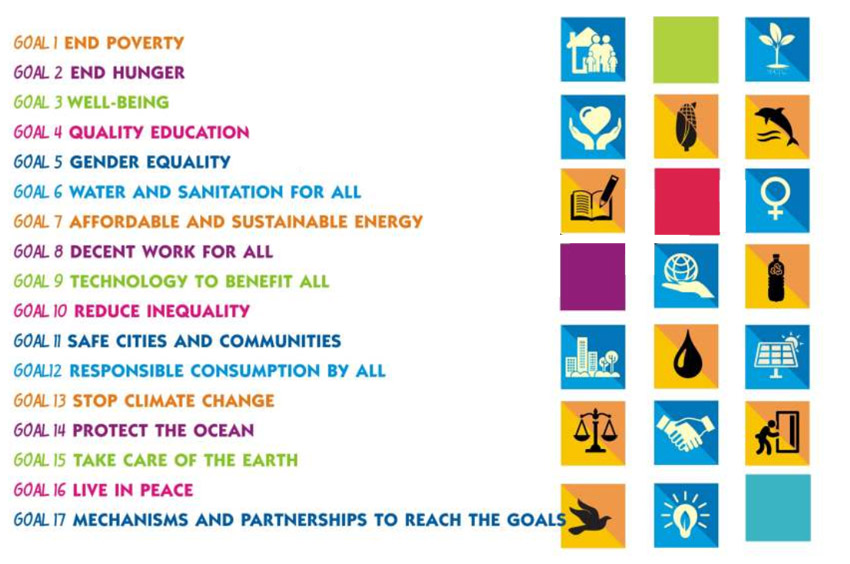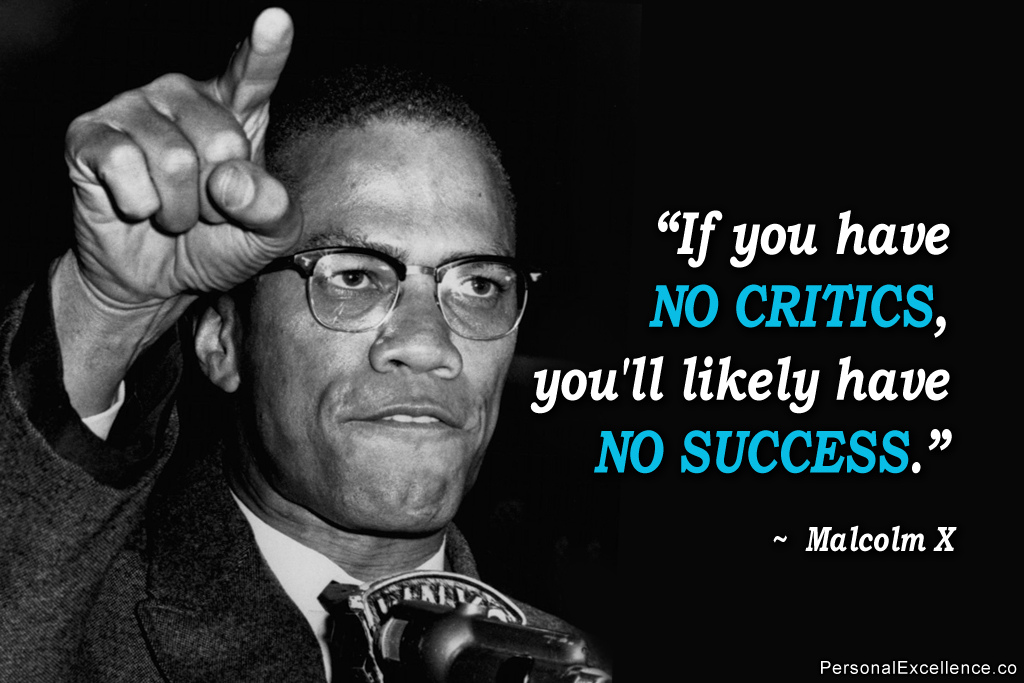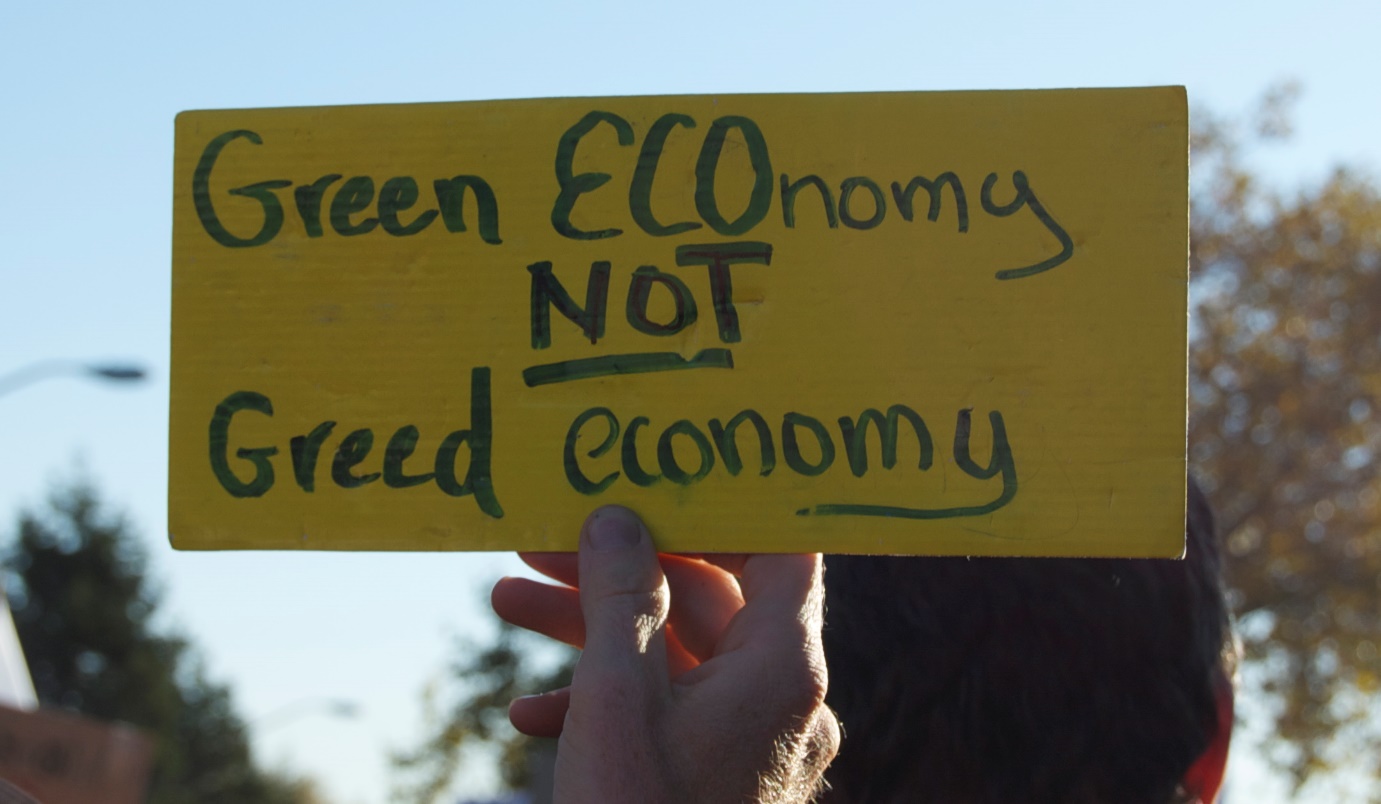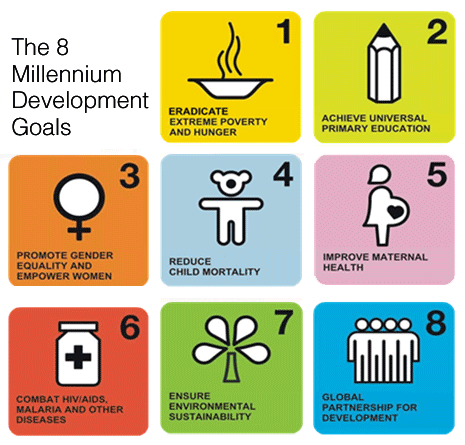Where does one even begin to unpack the new sustainable development goals (SDGs)?
When in doubt of what to think I always refer to the great Edward De Bono, thinking philosopher extraordinaire. De Bono created the ‘Six thinking hats’ tool to aid people to think fully and clearly about anything and everything. I use this tool today to begin my journey to understanding the SDGs.
1. The White Hat: the facts
The SDGs are a follow on from the millennium development goals. They are a set of universal goals for the world which will drive political and social action. They have yet to be finalised (end of September is the big day) but several drafts have been created. Currently there are 17 goals with 169 targets.
 The aim is to have the world reach these goals by 2030. Each target has indicators so that progress of the goal can be measured. For a breakdown of the draft goals and their targets see this helpful Guardian interactive.
The aim is to have the world reach these goals by 2030. Each target has indicators so that progress of the goal can be measured. For a breakdown of the draft goals and their targets see this helpful Guardian interactive.
2. The Red Hat: the feelings
SDG could just as well stand for Sad, Disturbed and Galled when one thinks about the problems of the world. I could go into facts and figures about topics such as hunger, child abuse and violence but they’re unfortunately aplenty in the web.
Sometimes we don’t even get shocked anymore by the sheer devastation in the world; we become so anesthetized to it all because let’s face it, it’s easier to forget the troubles of the world than carry them around.
There is another option. One can turn these feelings of distain into action. It is here that the SDGs can guide our actions. The idea of this social change brings feelings of hope, passion and determination into the hearts of the activists championing them. Eventually the SDGs may bring peace, security and happiness to those currently bullied by the world, and a sense of community and achievement for the entire human race.
3. The Yellow Hat: the benefits
The benefits of an equal, green and just world are endless. I have picked a target from the goals (target 17.39) at random to examine the benefit of 1/169th of the SDGS. Based on goal 17, this target reads:
“Establish and effectively implement a multilateral code of conduct for multinational corporations to secure social and environmental responsibility and accountability.”
An article by the Guardian in 2010 indicated that the combined environmental damage of the world’s top firms is over 2.2TRILLION dollars. This does not include social damage such as displaced workers/forced migration etc. Of course social and environmental damage is impossible to equate to numerical damage, but one can see from this attempt that the benefits of cutting these irresponsible actions is massive.
The old Buddhist saying rings true here ‘When the Last Tree Is Cut Down, the Last Fish Eaten, and the Last Stream Poisoned, You Will Realize That You Cannot Eat Money.’ The impact of achieving this one target alone on the world is almost impossible to imagine, but it would definitely lead to a healthier greener world.
4. The Blue Hat: the process
The United Nations conducted a massive consultation piece while drafting the SDGs. It is hoped that this process will help ‘buy in’ from around the world.
A major criticism of the MDGs was that they did not allow for good governance. One of the big ambitions of the SDGs will be to acutely track and monitor their development to ensure that all goals are being implemented by all stakeholders.
Each goal, however, can be adjusted to suit the ability of the country in question, meaning that each country’s ability is taken into account. This arguably strengthens the ‘how’ of the SDGs as it acknowledges that all countries are different, but they can all do something.
With regard to financing that will be decided in a large conference in July, but it is thought that public money, aid and monies from the private sector through taxation will fund the goals.
5. The Black Hat: cautions and criticisms

There are many logistical and economic questions to be raised on achieving the goals but there is one overarching philosophical and ethical cautioning that must be drawn attention to: Independence. Autonomy. Empowerment. Respect.
While the SDGs have done a better job than the millennium development goals (MDGs) to consult developing countries in their formation, it is of utmost importance that we avoid a situation of the West tells the rest.
While the balance between helping, leading and supporting is a tricky one, it is a balance that may not have yet been struck by the SDGs.
Furthermore the SDGs are supposedly universal. This means that even the most ‘developed’ countries have serious work to do (in particular with regard to consumption and the environment) and must follow the good example of other countries (for example did you know that Kenya scores better on the global green economy index than the United Kingdom?)
6. The Green Hat: creativity and new ideas

As I stated in my introduction, the SDGs have not been finalised yet. There is discussion that the goals will be shortened to 10, amalgamating goals that are similar. There is also many discussions to be had regarding financing strategies for these goals. There is scope for the United Nations to address current criticisms of the goals and invite an even wider range of stakeholders to be a part of this process.
As a friend of mine (who is 16years old and a young activist) said,
“they’re (SDGs) only do-able if everyone knows about them and everybody jumps on board and tries to do them.”
A wise statement! The SDGs will lead to a world of dignity, partnership, justice and prosperity for all people and the planet, if we all take them on together and acknowledge the responsibility we all have in their success.
………………………………………………………………………..
For more…
- Sustainable Development 2015 website | NGO stakeholder website in the SDGs process full of engagement tools, blogs, news and updates on the process and progress of the SDGs
- Blog: “Nothing about us, without us”: some perspectives on the Post-2015 Development Agenda by Henri Valot (Oct 29th, 2012) on Civicus blog

